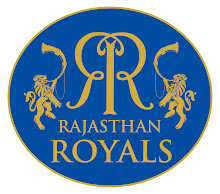No. of players bought: 17 (7 Indian, 10 foreign)
Money spent: $8.25 million
Big-ticket signing: Irfan Pathan ($1.9 million)
Bargain buy: Andrew McDonald ($80,000)
Eyebrow-raiser: Umesh Yadav ($750,000)
Ones that got away: Zaheer Khan and Sreesanth (Delhi bid $850,000 for each)
The man raising Delhi's paddle at the auction was the fastest among all the franchises and he spent quite a bit of money, especially on Irfan Pathan, who bats and bowls but hasn't been a match-winner at either skill for some time. Delhi have several allrounders in their squad but they lack a top-class Indian batsman, apart from Virender Sehwag. They also have only one spinner in their roster of 17 players - Roelof van der Merwe. The batting line-up, however, is solid, and in Sehwag and David Warner, they perhaps have the most explosive opening combination of the IPL. They bought back only four players of their old squad and bid aggressively against Deccan Chargers for a lot of players.
Squad
Batsmen: Virender Sehwag (retained), David Warner ($750,000), Aaron Finch ($300,000), Venugopal Rao ($700,000), Travis Birt ($20,000), Colin Ingram ($100,000)
Bowlers: Morne Morkel ($475,000), Ajit Agarkar ($210,000), Ashok Dinda ($375,000), Umesh Yadav ($750,000), Robert Frylinck ($20,000)
Allrounders: Irfan Pathan ($1.9m), James Hopes ($350,000), Roelof van der Merwe ($50,000), Andrew McDonald ($80,000)
Wicketkeepers: Naman Ojha ($270,000), Matthew Wade ($100,000)





